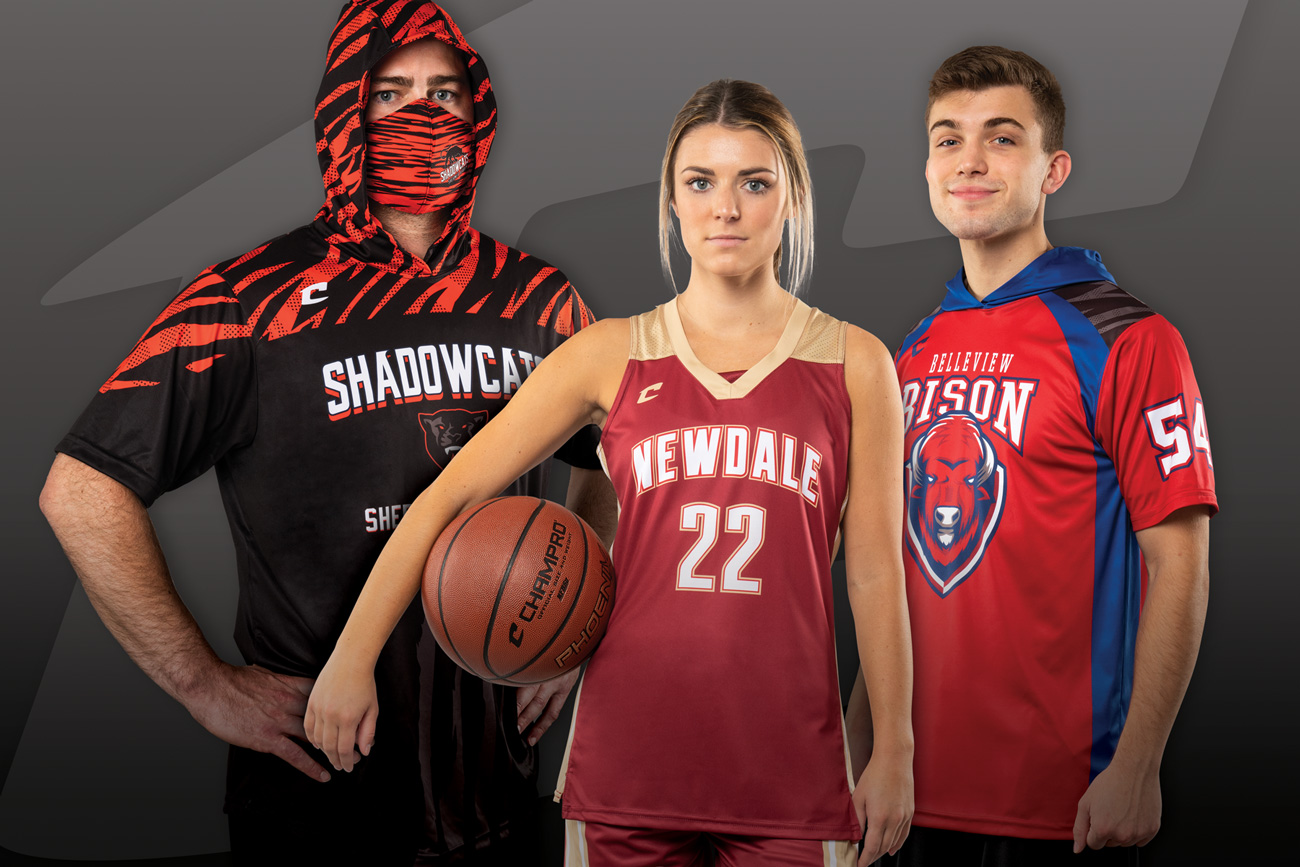
Transfers Of Power
Advances in sublimation tech are helping team dealers remain competitive
Transfers Of Power
Advances in sublimation tech are helping team dealers remain competitive

Although sublimation seemingly has been around forever, ongoing improvements in hardware and software technologies, enhanced fabrics and better inks are making this still-relatively new process increasingly practical and economical for the team market. The latest developments are helping to streamline inventory needs, speed the design, ordering and delivery process and lower prices and have even created the ability for dealers to build their own private label brands.
In this strange pandemic business climate, gaining even the smallest edge can pay huge dividends.
“Sublimation has become a leading market for us, especially in basketball, volleyball, soccer and softball. It’s fast to produce and the garments are colorfast, lightweight and easy to launder,” says Dan Carey, owner of Fort Worth, TX-based Carey’s Sporting Goods. “It took a while for sublimation to take off, but now it’s a huge part of the market. We now sell almost exclusively sublimated uniforms.”
He reports that less than 10 percent of his volleyball business calls for screenprinted uniforms, his softball business is divided equally between sublimated and screenprinted uniforms and sublimation is extremely popular with travel baseball and track teams.
“The biggest pros are that it’s done when you get it, which allows us to drop-ship the product straight to schools. It’s also cheaper for manufacturers and there’s very little waste,” adds Carey.
He and most other team dealers agree that from a product standpoint the biggest downside is that sublimated fabrics tend to be lightweight and are therefore not usually durable enough to withstand the rough and tumble of football. (Although this, too, is gradually beginning to change thanks to improvements in performance fabrics.)
Likewise, Duke’s Sporting Goods, which operates one location each in Elizabethtown and Bowling Green, KY, is seeing that more customers – particularly travel teams – are asking for sublimated uniforms.
“Travel baseball is number one in sublimation, followed by soccer and volleyball. There’s also strong demand from wrestling, track and cross-country teams,” says Duke’s manager Tony Carter. “Vendors are making sublimation consumer-friendly and have great uniform builders on their sites. Customers can create the uniforms they want using the builders and then get the products from Duke’s, which makes the entire process easy for everyone.”
Custom and More Custom
At Altamonte Springs, FL-based Good Sports, VP Mike Cooley especially likes the fact that teams can get very custom with sublimation, it’s easy to get a fill-in from the manufacturer when needed and the garments typically last longer than traditional screenprinted products. But the durability can also be a disadvantage, because that means there is less need for frequent replacement.
“We don’t get year-over-year orders from schools because the jerseys last longer and some traditionalists still like tackle twill,” he says.
Good Sports outsources sublimation through its vendors and the biggest customers are travel ball teams and high school baseball and basketball programs.
“We service a mixture of clubs and schools, many of which are getting away from traditional tackle twill. Sublimation is lightweight, which is particularly good for Florida weather,” Cooley says. “We expect sublimation to increase in the high school and college ranks, but we’re not sure if it will catch on with Little League teams. We believe it will translate into other areas such as travel tops for bands.”
At Billings Sports in Meriden, CT, sublimation is utilized in every sport. COO Mike Billings notes that one big advantage is that a sublimated shirt costs one price, no matter what’s done to it, and the colors are always right. Moreover, next-level sublimation-friendly fabrics have a more “cottony” feel, making them ideal for fanwear and athleisure products.
In many instances, Billings believes that it’s just as fast to utilize sublimation as it is to use screenprinting or transfers, but sublimation is easier and cheaper.
“Sublimation is the future and it will expand. However, sublimation is now a commodity — you can order that same shirt online from 10 different places, so it’s easy to get shopped around,” he says.
Interestingly, Billings Sports has decided to align itself more with printing than with team via its new Imprintz business that includes online fan gear shops and corporate online stores.
“Imprintz is bringing in business off the street that we had never gotten before. Lots of teams are now looking to screenprinters rather than team dealers for uniforms, so this is helping our business,” explains Billings. “Conversely, there are now more new team dealers coming from the screenprinting business.”
He reports that with a new showroom Billings has picked up 30 customers. The front of the showroom houses less team gear and more corporate products and is an expanding part of Billings Sports’ operations.
“We still won’t neglect team – it’s bigger volume and our main emphasis – but we’re pushing this other side. We had no team customers during COVID and this printing business helps us during tough times. We were able to jump on items such as masks, high-vis clothing, ice packs and medical kits,” Billings adds.
Keen on Sublimation
Blythe’s Athletics in Valparaiso, IN, is also keen on expanding its reach in the sublimation market and handles some in-house work such as spot sublimation for names and numbers.
“We’ve been utilizing sublimation for a while now and it’s being used by every sport, including football and fanwear. We can sublimate tackle twill and then sew it onto uniforms, which allows for many colors on one patch across the uniform. It’s very versatile,” explains owner Mike Blythe.
In basketball there’s a lot of mix and match with sublimated shorts, jerseys and shooting shirts, and hoodies, polos and hats are popular fanwear products. Blythe’s is also sublimating plaques for awards, mouse pads, photo puzzles, towels, blankets, tablecloths, socks — even crazy ugly sweaters.
“Sublimation is everywhere now,” Blythe says, adding that almost all uniforms for baseball, softball and soccer are sublimated, and teams from youth through high school are sublimating all or part of their jerseys.
“It’s less money to sublimate than to decorate, because there’s just one price for sublimation,” he points out. For example, a roundneck crew jersey with designs on the front, sponsors on the sleeve and numbers on the back are about $30 each. Baseball pants are now being sublimated, too, and they’re normally a $70 item.
“If a team dealer pushes hard enough, it’s possible to sell two sublimated uniforms for the price of one traditional uniform,” Blythe adds. “With sublimation, you don’t have the extra cost of resizing a design because it’s all done by computer, unlike screening that requires extra sets of screens for different garment sizes.”
As a further indication of sublimation’s growing popularity, Blythe is now starting to see more machinery for fully sublimated product getting installed in dealers’ stores.
“The machinery used to be in the $400,000 to $500,000 range, financially out of reach for many dealers, but now the entry level price point is about $150,000,” he says. “We’re also seeing a crossover of more screenprinters and advertising specialists getting into the team business and more team dealers entering the corporate business.”
As a result of the market shift pointed out by both Blythe and Billings, sublimated uniforms are now starting to take the place of branded options, which is bound to take a toll on the Big Three’s uniform sales.
“Wild colors and designs sometimes overshadow the importance of a small Swoosh,” observes Blythe. “Traditional colors are giving way to a whole rainbow of options, which in turn are changing the dynamics of traditional team uniforms. There’s no doubt that sublimation is here to stay.”
Sublimation Explained
For those who have lived under a design rock for the past decade, sublimation is essentially a process in which dye ink is printed on paper using a high-speed inkjet printer, and then the design is transferred into fabric using heat and pressure.
The dye ink is heated at over 400 degrees into a gas and then transferred onto fabric, absorbing into the fibers and becoming part of the fabric.
The dye ink then cools and becomes solid once again. (Sublimation ink is unique in its ability to convert from a solid to a gas without going through a liquid form.)
There is almost no limit to the number of colors that can be used in sublimation, and the process allows performance fabrics to remain soft and maintain their breathability.
Because the sublimated design is permanently infused into the fiber of the fabric, it won’t fade, crack or peel.
With its sharp and accurate colors and designs, shortened lead times and affordability, it is no surprise that sublimation’s popularity continues to rise among dealers and their customers.
Augusta Sportswear
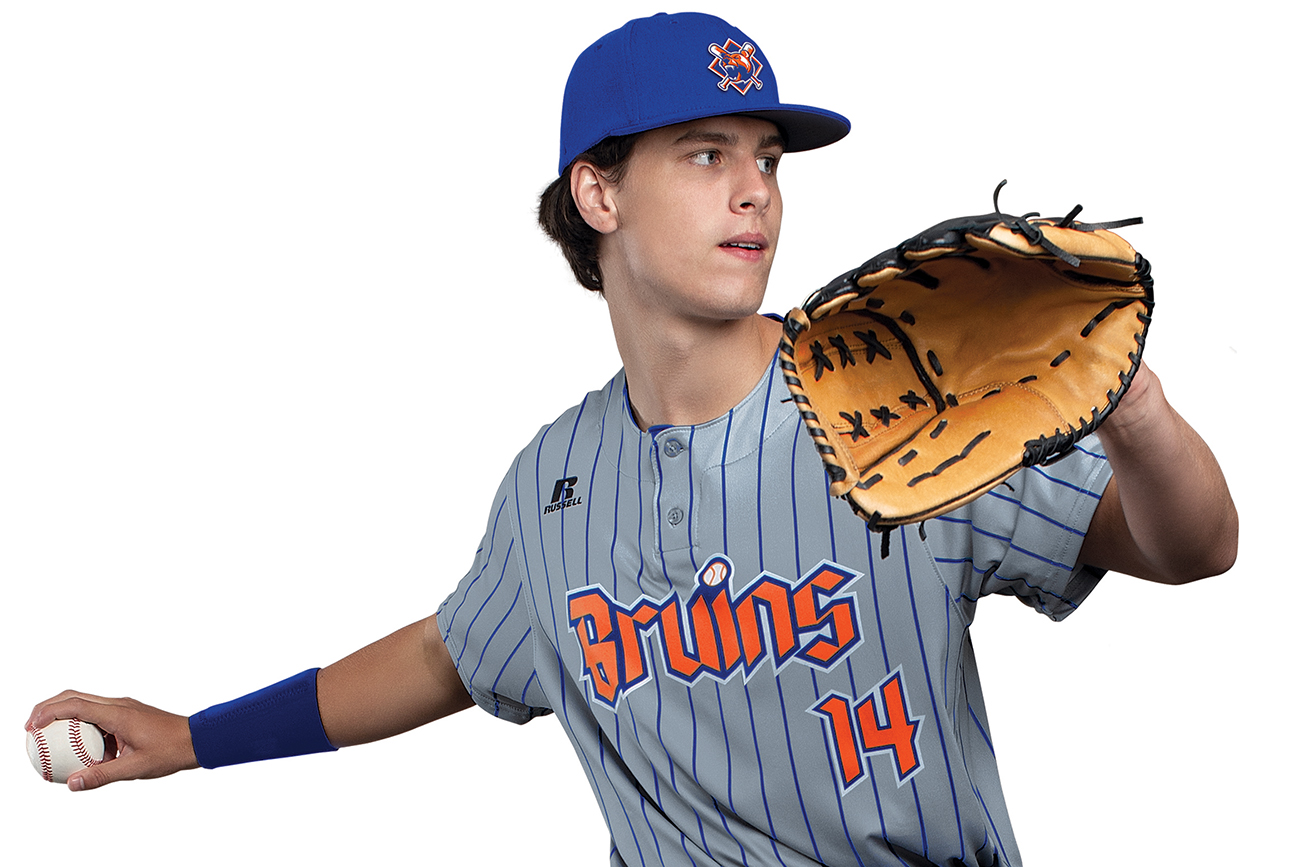
Market Trends: Sublimation continues to evolve as technology, product, pricing and lead times improve and these enhancements are expanding the opportunities for current sublimation customers and allowing new customers to enter the category, suggests Brad Sullivan, VP–sublimation. “The digital experience to design a sublimated product is becoming increasingly important. Customers want to interact, personalize and visualize their product before making a purchase,” he explains. “The product is migrating towards sleek and subtle design with softer performance fabrics. The market relevance of sublimation is pushing positive advancements in the category that will spur future growth.”
Technology and Initiatives: Augusta’s FreeStyle program is the cornerstone of its digital platform. “FreeStyle allows customers to design a product in five easy steps in record time on either a phone or desktop. The product is displayed in a 3D image and 360 views so that it can be easily shared with customers,” explains Sullivan. “We continue to add new features that improve the customer experience and increase production speed through thoughtful automation.”
Advice for Dealers: Sullivan contends that sublimation allows dealers to deliver incredible value to their customers by providing standout design, personalization and service. “Sublimation lead times and pricing have become increasingly competitive, to the point where sublimation is now a viable option at the price-conscious youth and recreational levels. Dealers who embrace the shift and offer sublimation as a new solution to their recreational and youth leagues will position themselves as thoughtful experts and have an advantage over the competition,” he says.
The Future: “The sublimation market is rapidly evolving as the category becomes more viable for a broader base of end users,” observes Sullivan. “We will see it grow in the youth and recreational space, the corporate market and the outdoor space. Each of these new customer segments will have a different set of expectations and requirements, but all will require speed and excellent customer service.” He believes that the leading brands will find ways to use technology to improve their speed and deliver unmatched service.
Founder Sport Group

Market Trends: Russ Neale, SVP–marketing, points out that custom sublimation is getting faster and more flexible. “The technology has been used on premium jerseys for years and its capability to produce distinctive garments is finding an increasing number of applications both on and off the field. Many new customers were introduced to custom sublimated masks due to the pandemic and this is opening up the world of possibilities,” he says. “With vibrant colors and graphics permanently embedded into the garment, personalized for the wearer, custom sublimation is finding new corporate and promotional markets.”
Technology and Initiatives: Founder Sport Group just launched Gameplan, billed as custom sublimation made simple for dealers. “Custom sublimation is so dynamic, it can be overwhelming for teams to visualize the possibilities. Gameplan cuts through the clutter by letting teams browse uniforms and fanwear for their sport, in their team name and colors,” explains Neale. “We’ve worked closely with key dealers and have found that it not only speeds up selling, but leads to incremental purchases. Plus, Gameplan is 100 percent dealer-driven.”
The company offers three custom sublimation brands to its dealers. Flash 2-Day Tech Tee features finished garment sublimation in which crew, V-neck and sleeveless garments are pre-made and the front and back are sublimated using an exclusive Coverall process. Chromagear is a brand of custom sublimated uniforms, offering cut-and-sew sublimation. ProSphere offers custom-sublimated fanwear.
Technology and Initiatives: Because there are never any inventory or art upcharges for custom sublimation, dealers can say “Yes” to their customers without impacting profit margins, notes Neale.
The Future: On the front end, the company will continue to simplify the custom experience. “It’s not enough to hand a team a catalog filled with designs in the wrong colors. Similarly, we can’t hand teams a blank sheet of paper and ask them to design their gear. We have to visualize the possibilities so coaches and teams can browse and make their choice. A team won’t ask for something they don’t know is possible,” says Neale.
FSG America

Market Trends: Ken Kennedy, managing director of FSG America, is seeing more migration to sublimation because it provides tremendous flexibility and reduces inventory needs.
Technology and Initiatives: The company just launched its full Private Label 3D Builder that allows each dealer to brand according to its own guidelines. “A traditional builder is a rendering tool, not an integrated production tool. But our Private Label 3D Builder is a quantum leap from what’s going on right now. It’s a true production tool,” says Kennedy. In addition to its huge file creation capacity, the builder can create marketing tools for sales reps, which eliminates the need for a graphics team. “Once a team logo is created and uploaded onto the builder, the rep can create designs — it’s a very polished presentation and it allows the team dealer to get into all markets and all sports,” he says. As a bonus, the new builder allows the same designs and coloring in uniforms to be used in fanwear, creating a cohesive look for schools and teams. “It’s a good revenue stream for dealers,” Kennedy remarks.
Advice for Dealers: Kennedy suggests that team dealers should embrace sublimation because of its many conveniences: single purchase, a clean way to go, never out-of-stock, and there’s no obsolescence with sublimation as with cut-and-sew. “The world is changing dramatically and there’s a migration to direct-to-consumer that won’t stop,” he says. “As the technology expands, the dealers are getting squeezed, meaning that dealers need to push their own private label brands, and sublimation supplies that. Sublimation allows big and small dealers to have and develop their own private label brands, and they can cut the number of SKUs and decrease inventory in the process.”
The Future: “The biggest change coming is faster speed,” says Kennedy. “”COVID-19 has accelerated the change of brands going direct-to-consumer to regain revenue and margin and this is a real negative for the average team dealer. The capabilities of sublimation are essential for dealers to start selling their own brand. Today’s sublimated product is just as good or better than any from the Big Three brands and private label brands are great in building customer loyalty. My advice to dealers is to use sublimation to build your own brand equity— stop building someone else’s.”
Cliff Keen
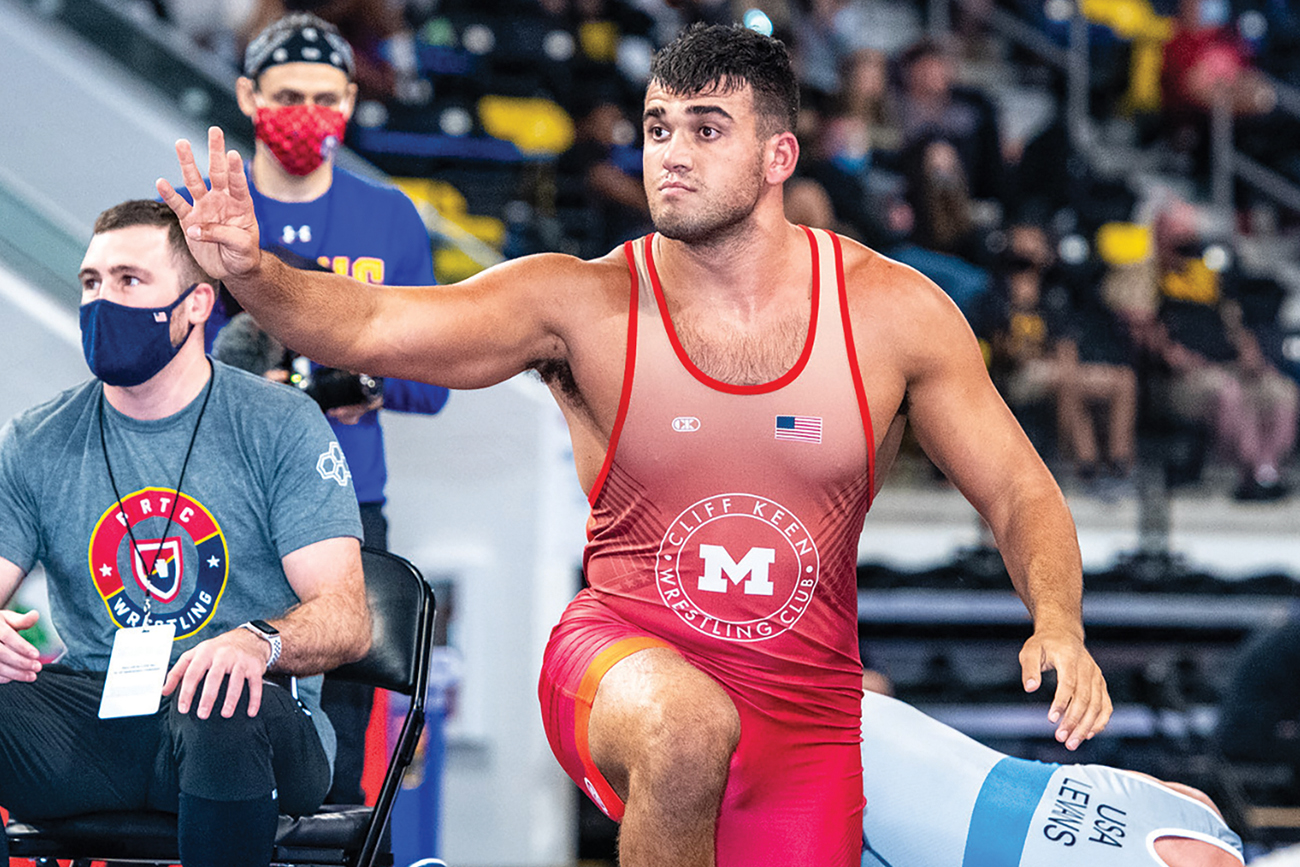
Market Trends: Although this wrestling market specialist is seeing a pickup in business, there are still large portions of the country where wrestling is on hold due to the coronavirus pandemic. However, teams are getting uniforms ready to go once states provide more clarity for winter sports, according to SVP Chad Clark. Regarding sublimation trends in wrestling, “In past seasons, the crazier and wilder the look, the better. But now the trend is toward collegiate and cleaner looks, for the most part. People love throwback looks, which tend to be very clean,” he explains.
Technology and Initiatives: Clark says that the sublimation process is continually improving. “Proprietary technology is like a good recipe — ingredients such as ink, paper and our state-of-the-art sublimation press matter. We’re always looking to improve our processes and quality and to get faster,” he says.
Advice for Dealers: “Team dealers have gravitated toward sublimation over the past decade — it’s one price for one color or 50 colors and it’s an easier ordering process,” says Clark. “The challenge is getting good artwork that converts well to large files.”
The Future: Clark points out that a lot of companies have invested in sublimation and there’s a greater diversity in the types of garments that can be sublimated. But expense is still an issue. “It’s an arms race with speed and efficiency and you need the right equipment to increase speed and quality,” he says. “The equipment is expensive and you need skilled operators to use it.”
Champro
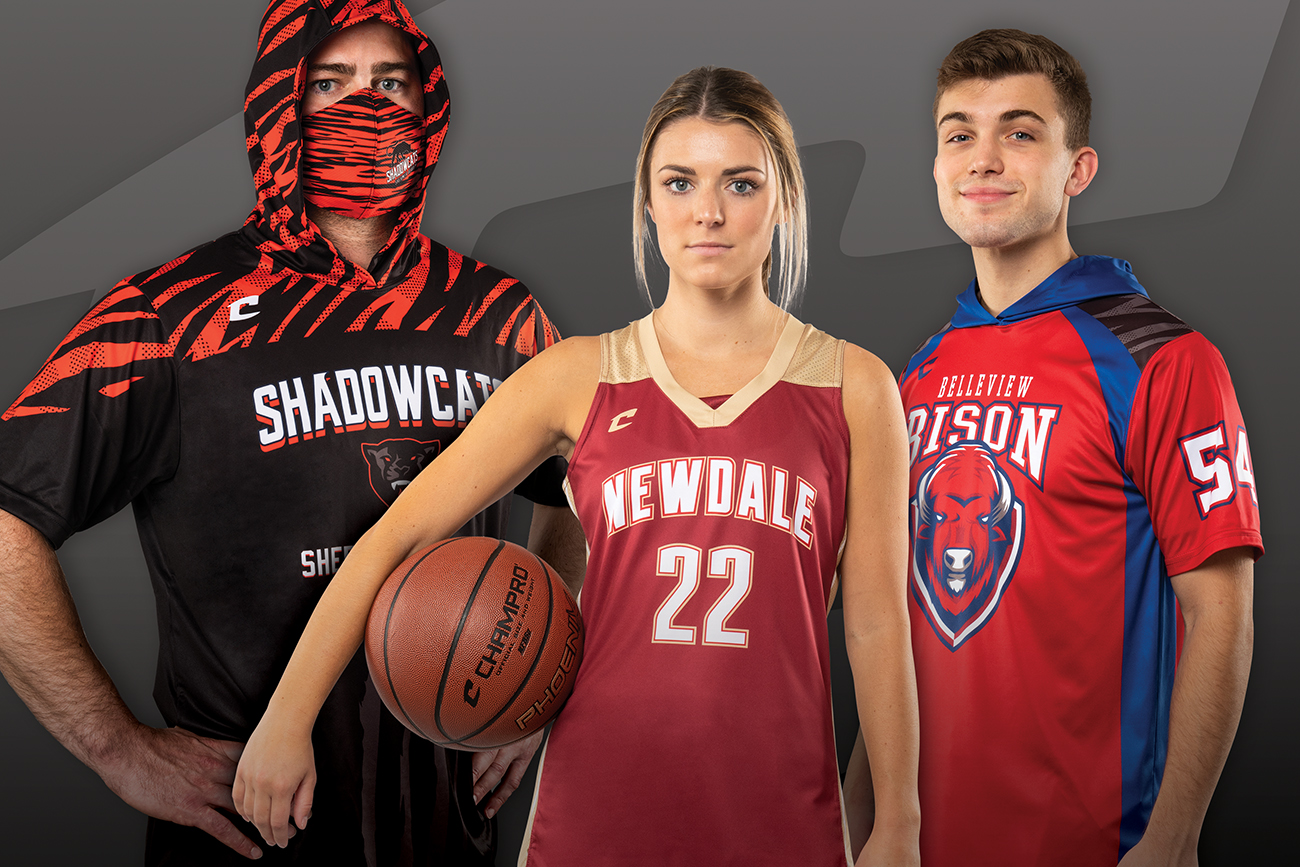
Market Trends: “We have been noticing a rising trend in gradients and ombre designs,” says Jasmine Parks, athletic apparel product manager. “Single-ply reversibles in football, lacrosse and basketball have continued to increase in demand and fully sublimated bottoms for football and baseball are also garnering more interest.”
Technology and Initiatives: Parks reports that Champro is working on getting more advanced technologies such as high-speed printers and laser cutters, because having such tools will help advance speed-to-market efforts.
Advice for Dealers: “With sublimation, you get a fully customized uniform at a great price,” says Parks. “The price point continues to move down while product quality and options are on the rise. Lead times also continue to shorten, making sublimation an outstanding choice.”
The Future: “The challenges are not knowing when we have surges of orders, especially with the current, uncertain times,” says Parks. “But we have prepared ourselves with new equipment to cover those surges. We will eventually switch fully to these new technologies and continue to research new ways to further advance our operational performance.”
ASICS
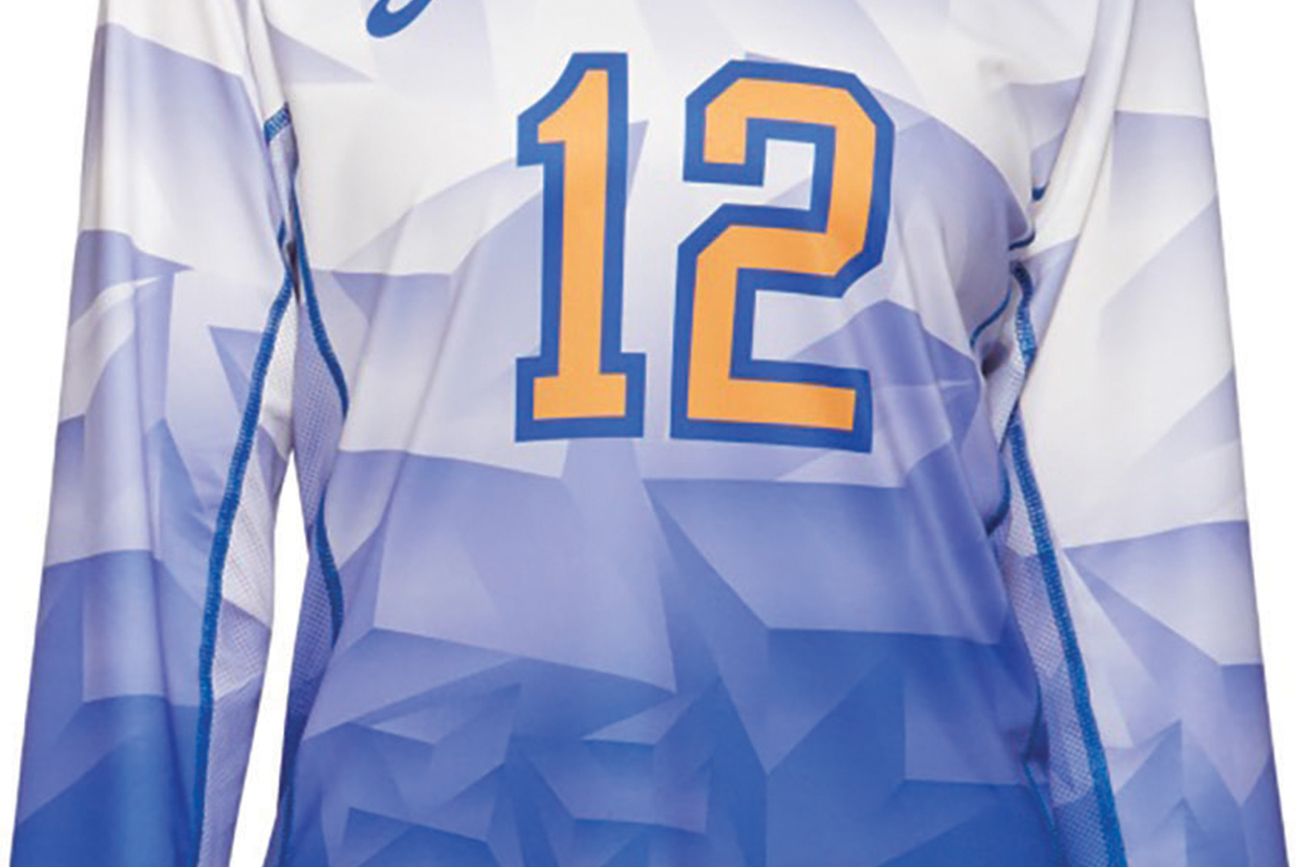
Market Trends: In 2020 and into 2021, ASICS is focusing on its four core sports: tennis, volleyball, wrestling and track and field. “We are seeing a very big swing to full custom designs in these sports,” says Adam LaFollette, director of team sales at ASICS. “Teams are looking to be unique and stand out from other programs. Therefore, simple color blocking differences on templated designs are becoming outdated.”
Technology and Initiatives: ASICS is focused on what sublimation means to its team division and to this end new technology, processes and products are in the works to help enhance turn times. “The faster we are to the market while maintaining our superb quality, the more meaningful we become to the consumer,” notes LaFollette.
Advice for Dealers: LaFollette advises team dealers to push sublimation because it provides teams with the opportunity to achieve a full unique look. Additionally, the turn times continue to get faster.
The Future: “The sublimation is on an amazing track to continue to be a very large portion of the uniform marketplace,” says LaFollette. “Those brands that evolve their technology, processes and products in the space can reach a younger consumer in the market. The key is delivering product in a timely fashion as there are manufacturers now turning orders in a matter of days.”
Stahls
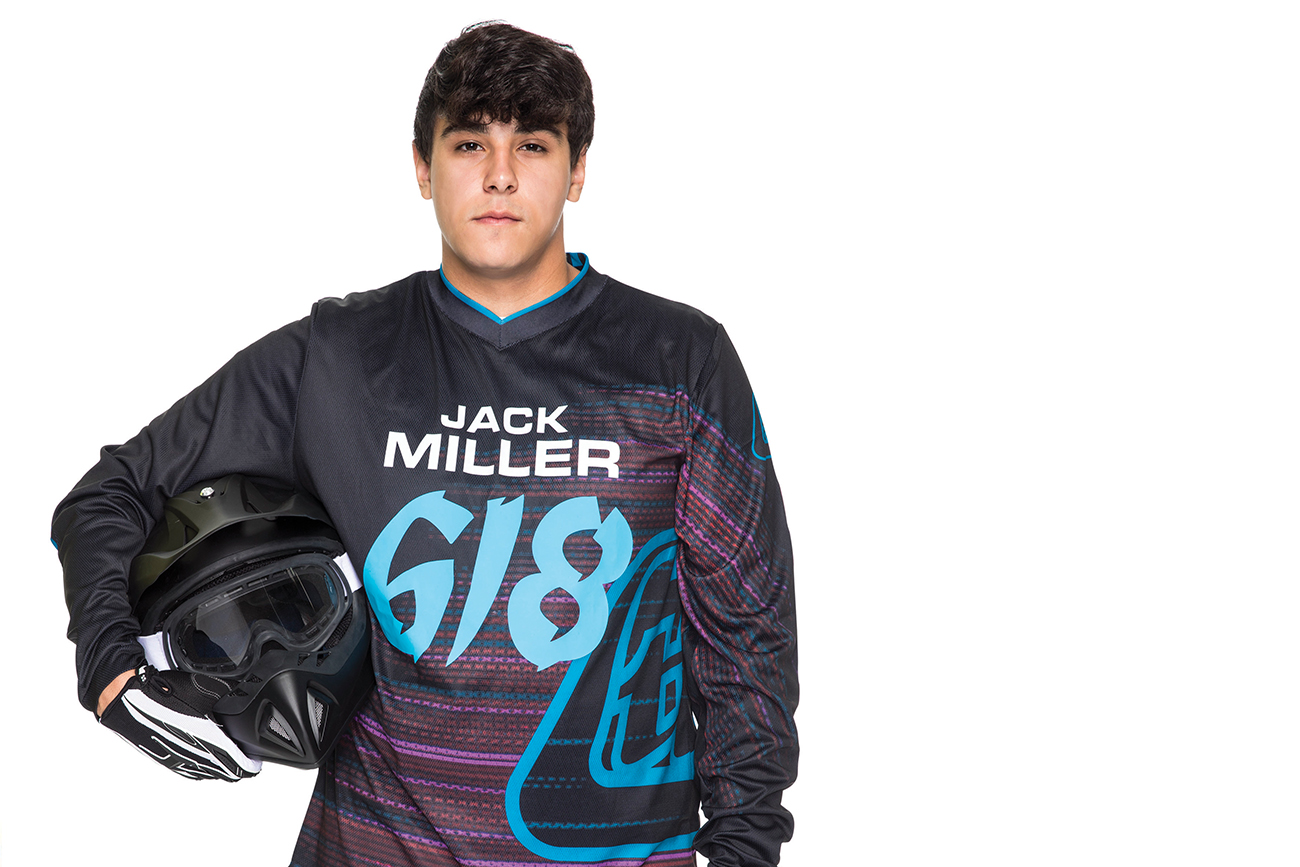
Market Trends: “Sublimation has been popular for some time because of its ability to achieve high-quality, full-color, all-over decoration,” reports Jenna Sackett, Stahls’ heat printing expert. “In the world of sportswear, we’re seeing more and more sublimation-friendly blanks ranging from apparel like shorts, hoodies, headwear and children’s wear to trendy accessories such as face masks, neck gaiters and towels.”
Technology and Initiatives: Stahls’ offers a range of products to decorate sublimated fabrics and provides the service of sublimated twill patches as well as custom sublimated numbers and transfers. “There are challenges in adding customization to sublimated shirts. They look great, but they’re hard to decorate. If you’re heat printing on sublimated garments, you need heat transfers that block dye migration,” says SVP-sales Josh Ellsworth.
Advice for Dealers: The use of all-over sublimated jerseys by team dealers is a continuing trend, according to Ellsworth. “The advantages are that jerseys arrive already printed and no further customization is needed. However, most team dealers know that there is always a need to add a new player, change a number or make some additions to a team jersey after ordering.”
The Future: Stahls’ sees a rise in the demand for adding customization to sublimated garments, a continuing trend of dealers taking advantage of all-over sublimation capabilities, and an increase in the types of performance apparel that can be sublimated.









%20(1).jpg)


.svg)